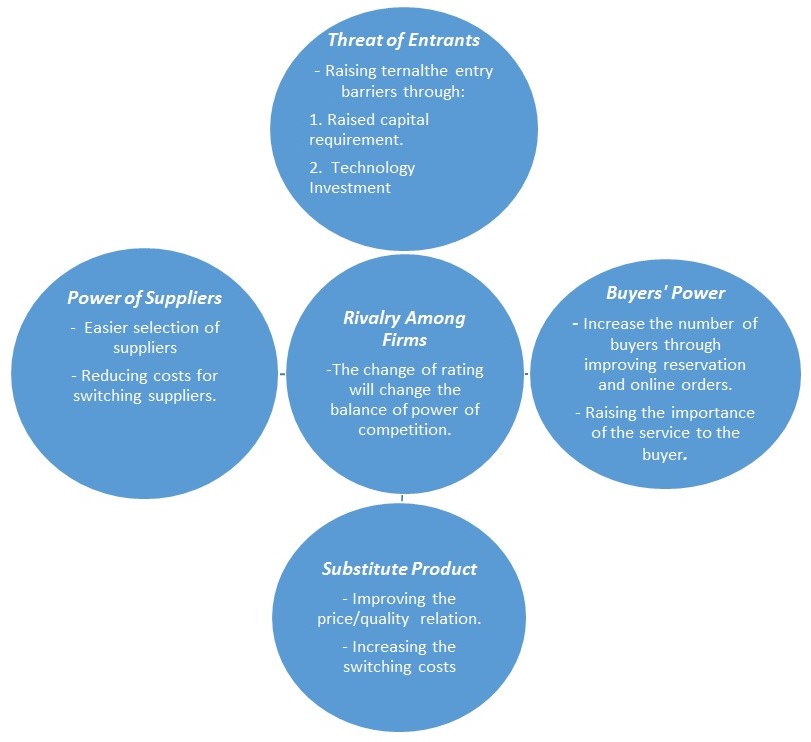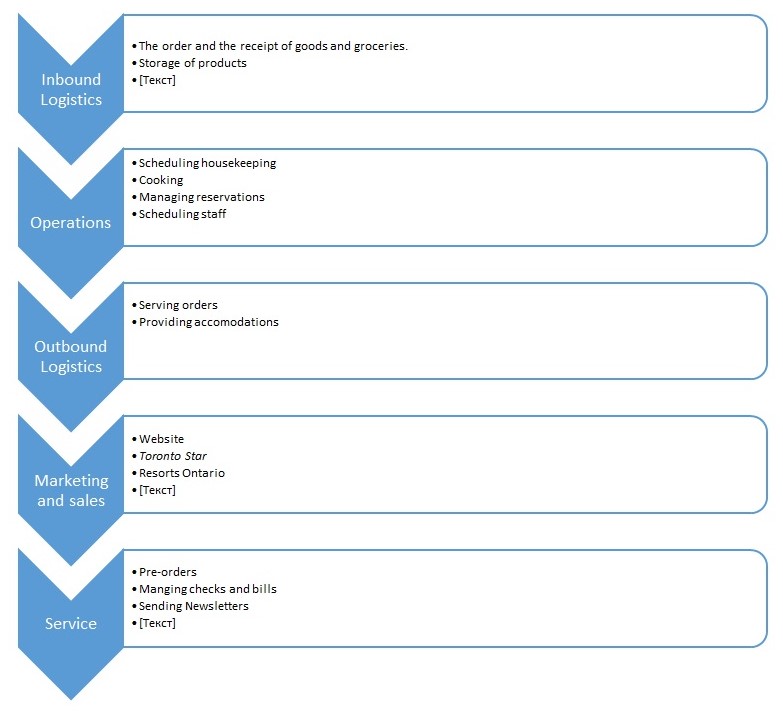Introduction
A major step necessary for the initiation of IS development is in identifying the current needs of Birch Point Lodge (BPL). In that regard, a strategic problem analysis might be required, in which the needs and the objectives for the system will be established. The initiation of the project is usually in response to an opportunity or a problem, according to which the different analyses might be implemented. It is clear for the case of BPL that the need for IS system is driven by existing problems, rather than opportunities, and thus, an appropriate method of indicating the need for a new system can be seen in asking the question: What elements the system will bring to deal with the existing problems? (Bocij et al., 2005, p.353).
In that regard, an analysis of the current business environment of BPL will indicate problem areas.
External Analysis
A useful tool to take a glimpse of the way the company’s external environment and the way competitive advantage can be created is Porter’s Five Forces Model.
“An understanding of the operating forces in the business environment would help not only in identifying strategic thrust areas, but also indicate the strategic mode that could be adopted in order to gain a competitive advantage” (Prakash, 1998, p.2). The five forces of BPL can be seen in Appendix 1.
Internal Analysis
The analysis of the internal environment of the company can be facilitated through the usage of a value chain analysis. In that regard, the value chain can be defined as a collection of the company’s activities “that add value to an organization’s products or services “(Bocij et al., 2005, p.60). Accordingly, the analysis of the value chain might provide an insight into which areas can provide a competitive advantage. The primary activities of the company can be seen in Appendix 2.
The IS can be seen as a supporting activity, which will be helpful in managing the primary activities outlined in the value chain analysis. Accordingly, the ways IS can impact the value chain, in addition to time and costs, can be seen through reach and dialogue. Thus the support activities can be seen in the following list:
Reach – managing the information between orders and reservations:
- managing workers and salaries.
- serving a larger number of visitors.
- Automating the management of newsletters.
Dialogue – improving the interaction with suppliers:
- improving the interaction between different processes, e.g. housekeeping, checking-in, reservation, etc.
- calculation of bills.
SWOT Analysis
Combining the aforementioned analyses, a SWOT analysis, “a commonly used tool for analyzing internal and external environments in order to attain a systematic approach and support for a design situation” (Stewart et al.p.5). In SWOT analysis will enable outlining the strengths and the opportunities, which resulted from integrating the IS system. The results of the SWOT analysis can be seen in Appendix 3.
Thus, it can be seen that SWOT analysis reveals that the combination of the company’s strength and the potential opportunities provided by the IS can be used to overcome the weaknesses and the threats of the company. In that regard, the new IS will be the solution to the company’s existing problems by integrating the internal processes and e-commerce into a single system. Such a system will enable the company to increase its efficiency, expand customers’ base, and save time and money.
References
BOCIJ, P., CHAFFEY, D., HICKIE, S. & GREASLEY, A. 2005. Business information systems : technology, development and management for the e-business, New York, Financial Times/Prentice Hall.
PRAKASH, A. C. 1998. Leveraging the Potential of Strategic Systems. Information Systems Management. Web.
STEWART, R. A., MOHAMED, S. & DAET, R. STRATEGIC IMPLEMENTATION OF IT/IS PROJECTS IN CONSTRUCTION: A CASE STUDY [Online]. Elsevier Science. Web.
Appendices
Appendix 1: Porter’s Five Force Model

Appendix 2: The Value Chain Analysis
